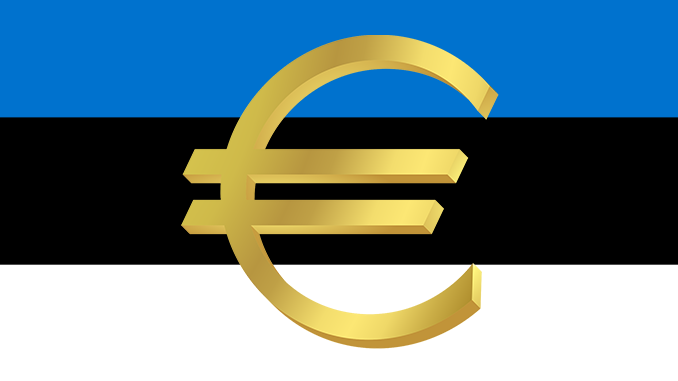
EU member Estonia wants to test the introduction of a state-supported digital currency (E-Euro) with its central bank. A corresponding project has now been launched. An exciting approach is to base the E-Euro on a state-supported block chain already in use in Estonia.
In the very north of the EU, small Estonia with just 1.3 million inhabitants has made a name for itself over the past decades as “E-stonia”. For in the Baltic state a paperless government was proclaimed early on as a goal, online voter participation was made possible and the goal is generally valid in Tallinn and the surrounding area: In the 21st century, citizens should be able to participate in public life in all aspects via the Internet. As a new step towards this goal, Estonia has now focused on the E-Euro. Eesti Pank, the Estonian central bank, is launching a project that is to sound out the technological basis of a CBDC (Central Bank Digital Currency). According to a press release, the project is based on the KSI Blockchain developed in Estonia, which is already being used in elections and in public administration.
Background on Estonia and E-Euro
In the European Central Bank (ECB), the idea of an E-Euro was recently viewed more and more positively. The latest ECB position paper calls for a decision in 2021. Estonia now wants to promote its technological solution KSI Blockchain in cooperation with the domestic blockchain company Guardtime. In a blog post on E-Euro and CBDC, Guardtime makes it clear that for reasons of security, transparency and tamper-proofing, E-Euro should be based on a genuine decentralized block chain. Most of the international CBDC projects to date, such as the one in Sweden, leave the central banks, as the central authority, the option of intervening in money transfers, even with digital currencies.
One catch to the Estonian initiative: the KSI Blockchain already stores the digital data of almost all citizens. This is because it already serves as the technological basis for E-stonia in the healthcare system, tax returns, education and elsewhere. So the E-Euro would rather not be anonymous. The second catch: Eesti Pank and Guardtime predict hundreds of thousands of transactions per second for the E-Euro, but KSI Blockchain has not yet been tested for such a load. In order to test the scalability and acceptance of the CBDC, the Estonian project wants to take up to two years.
Conclusion: Technological competition begins at the E-Euro
A few weeks ago Tezos (XLM) was still pleased to be tried out with its Blockchain as technological basis with French tests for an E-Euro. With its KSI Blockchain and a clear commitment of the central bank in Tallinn to decentralized solutions, Estonia is countering this trend. While a decision on CBDC is still pending at the ECB, some euro countries are already preparing their position in detail. It is clear that there are also advocates of a genuine block chain for the euro. Estonia also hopes that this will inspire confidence among citizens, who do not want the ECB to manage the euro in controversial cases with a technologically centralized approach. And last but not least, in Tallinn, where there is a great deal of pride in self-developed e-government, there is of course speculation about jobs and follow-up orders related to the E-Euro. The race for the leading role in E-Euro seems to be on.
Best place to buy Bitcoin:

Leave a Reply